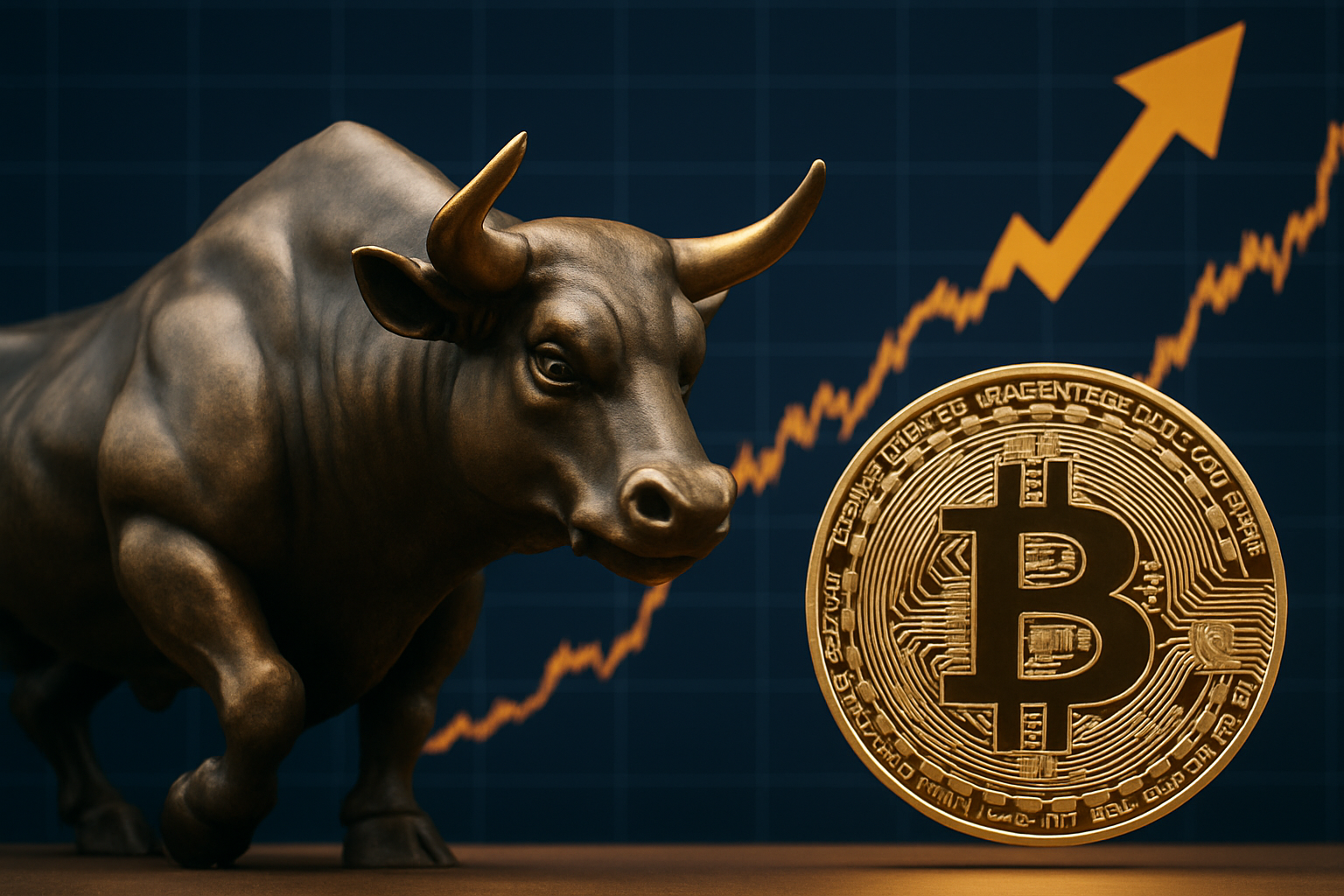Blog

That’s why the bull cycle in the crypto market is yet to come.
In recent months, if you've been looking at the crypto market charts, you've probably experienced that mixed feeling: "Okay, we're up... but isn't this the peak already?" Many people ask this question, especially crypto newbies who still remember the terrifying crashes. The truth is that the market always leaves room for doubt, but the data, trends, and even the global context suggest one thing: the big bull cycle hasn't really started yet.
Translated with DeepL.com (free version)
History likes to repeat itself (especially in crypto)
Cryptocurrencies move in cycles. This is no longer a theory, but an observed pattern. Every Bitcoin halving—the moment when the mining reward is cut in half—leads to reduced supply. After a while, the market responds with a new wave of demand, and the price explodes.
We are now at the very beginning of this process. The halving is already behind us, but its effect is just beginning to be felt. Historically, there is always a certain delay – the market reacts not in weeks, but in months. This means that the big boom may still be ahead of us.
The institutions are waiting at the entrance
Remember when crypto was a topic for gamers and people with laptops in cafes? Those days are long gone. Today, giants such as BlackRock, Fidelity, and Grayscale are entering the scene, offering ETFs linked to Bitcoin. And that changes the game fundamentally.
ETFs make crypto accessible to a huge mass of investors who would never open an account on a crypto exchange. It's like launching an express train to the market — billions of dollars of capital can pour in without us even noticing.
And you know what's most interesting? That money isn't all in yet. The entry is gradual, institutionally cautious, and that means the serious upward pressure is yet to come.
The global backdrop is favorable for crypto
Let's take a broader view. High inflation, central banks printing money, geopolitical tensions – all of this undermines confidence in traditional currencies.
When the dollar loses some of its luster, when the euro struggles with its own crises, investors start looking for "safe havens." Gold is one of them, but it's the old weapon. The new weapon is Bitcoin.
And while gold has to be carried, stored, and guarded, Bitcoin is simply in a hardware wallet or even on a piece of paper with a seed phrase. Easier, more global, more flexible. This makes crypto a natural candidate for the next big wave of capital flows.
Altcoins: when will they wake up?
Whenever the market starts to move upward, Bitcoin is always the first to rise. It is the "leading indicator," the big bell that everyone listens to. But once it has paved the way, capital usually starts to flow into altcoins.
Ethereum, Solana, Avalanche, Arbitrum, Layer-2 solutions, DeFi protocols — all of these will soon feel the effect of increased demand. And if history repeats itself, we may see gains that exceed even the most optimistic forecasts.
Of course, not all altcoins will survive. But those with real technology, a large community, and stable teams have every chance of becoming the stars of the upcoming cycle.
Market psychology: fear and greed
The crypto market has always been driven by emotions. The Fear and Greed Index is like a mirror of sentiment. And here's the interesting thing—despite the increased prices, the market has not yet reached that moment of mass euphoria where "everyone is buying."
This is a sign that the cycle is in the middle, not at the end. The biggest gains often come when skeptics are still grumbling and the media has not yet filled its front pages with news about crypto millionaires.
What does this mean for you?
If you are new to crypto, these analyses may sound a little abstract. But the simple truth is: the market is in the process of building a new wave, not in the process of exhaling.
Yes, the risks are real. Volatility will remain. Regulations will tighten. But if you're looking for a moment to understand why people are talking about a "bull cycle," it's happening right before your eyes. And it's only just beginning to unfold in full force.
The end, which is actually the beginning
The bull cycle is not a moment, but a process. It starts quietly, with institutional movements, a few upward charts, and timid confidence. But then it grows into a movement that changes the entire market.
And if all the signals are correctly interpreted, we are now only in the first chords of a symphony that may continue to play for a long time.